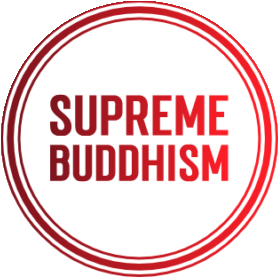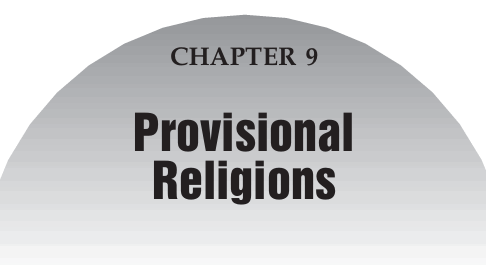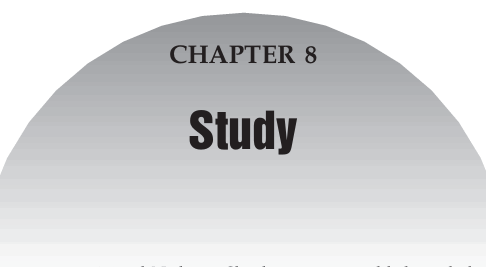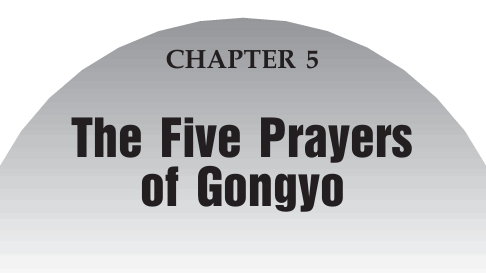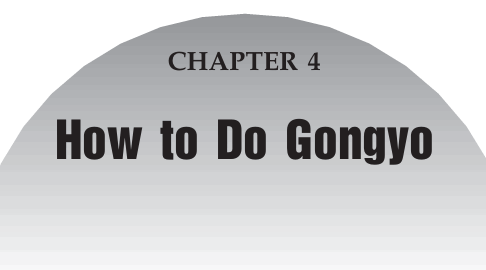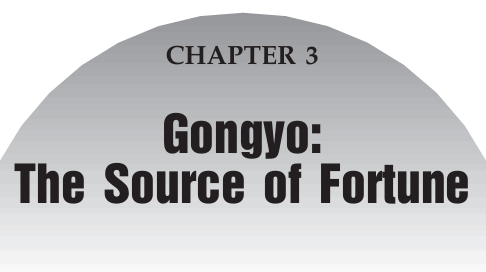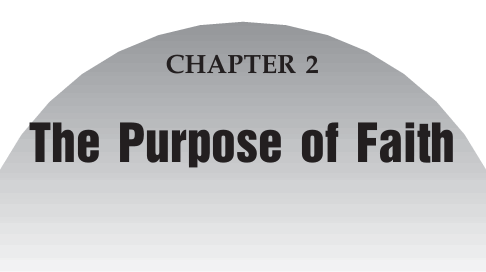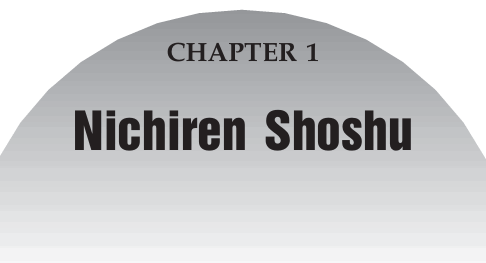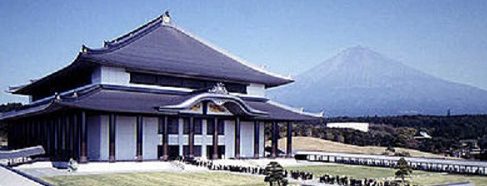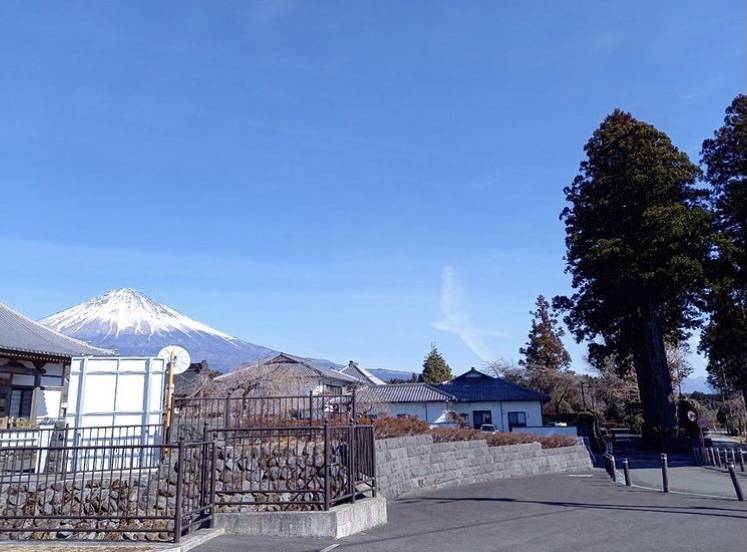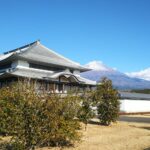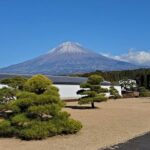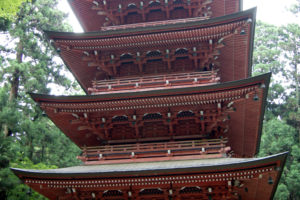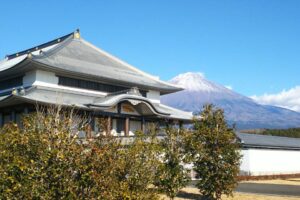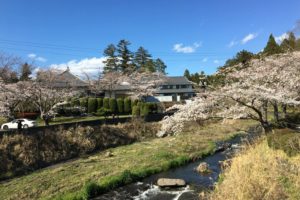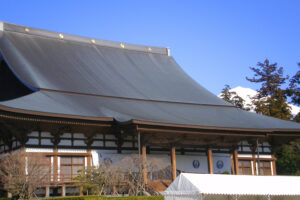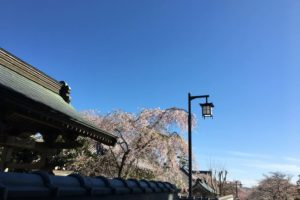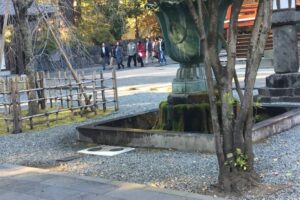Our world in the 21st century is described in Buddhism as the time of evil confusion of the Latter Day of the Law. Along with advancements and developments in politics and civilization, the Latter Day of the Law is also characterized by increasing instances of severe greed, anger, stupidity, and arrogance. It is a time when the human spirit is distorted and the people constantly display corruption and conflict. Heretical views permeate the minds of the people. The Gosho that will be the focus of my sermon today explains the relationship between these conditions and Buddhism in the Latter Day of the Law.
“On the Buddha’s Prophecy” ( “Kembutsu mirai ki”) is a title that Nichiren Daishonin, himself, placed upon this Gosho. It literally signifies a “document that reveals the prophecy of the Buddha.” The Buddha usually refers to Shakyamuni. The prophecy ordinarily refers to the part in the Lotus Sutra in which Shakyamuni predicted the events that would take place after his entry into nirvana. However, in the beginning of this Gosho, the prophecy is described through the following reference to the Bodhisattva Medicine King (Yakuo; twenty-third) chapter:
In the fifth five hundred years after my death, accomplish worldwide Kosen-rufu and never allow its flow to cease.
(Kaiketsu, p. 539)
According to the Sutra of the Great Assembly (Daishi-kyo), the conditions in the evil age of the Latter Day of the Law are characterized by conflict and the decline of the Pure Law. However, in the “Bodhisattva
Medicine King (Yakuo; twenty-third) chapter, Shakyamuni predicted the accomplishment of worldwide kosen-rufu in the fifth five-hundred year period after his death. Thus, he prophesized that in the Latter Day of the Law, the Lotus Sutra would be propagated worldwide.
Those who hear this are bound to wonder how the Lotus Sutra could be propagated worldwide, when the Sutra of the Great Assembly (Daishi-kyo) predicts the decline of Shakyamuni’s Buddhism in the Latter Day of the Law. There seems to be an apparent contradiction between what is propounded in the Sutra of the Great Assembly and what is stated in the Bodhisattva Medicine King chapter of the Lotus Sutra. In the Gosho, “On the Buddha’s Prophecy” (Kembutsu mirai ki), Nichiren Daishonin addresses this apparent contradiction.
In describing the type of doctrine that must be propagated in the Latter Day of the Law to save all humanity, Nichiren Daishonin set forth a standard of evaluation consisting of five criteria. They are known as the Five Guides for Propagation (goko kyohan). These Five Guides are: a correct understanding of the teaching; a correct understanding of the people’s capacity; a correct understanding of the time; a correct understanding of the country; and a correct understanding of the sequence of propagation. Of these, a correct understanding of the time is most significant. It means that one must select the correct doctrine to be propagated, based on an understanding of the time periods in Buddhism, which are the Former, Middle, and Latter Days of the Law.
A cursory look at these conditions would show that the Latter Day of the Law is a time when Shakyamuni’s teachings lose their power, and conflict and discord prevail. Thus, some people may lament about their tremendous misfortune in having been born in the Latter Day of the Law. They might grieve that their plight is caused by great karmic sins from the past. Such people are disappointed that they were not born in the relative calm of the Former or Middle Days of the Law.
However, this was not how Nichiren Daishonin viewed these conditions. In fact, in the beginning section of the Gosho, “On the Buddha’s Prophecy” (Kembutsu mirai ki), he expressed his joy in being born in the Latter Day of the Law. Furthermore, those who correctly understood the Lotus Sutra, such as T’ien-t’ai and Dengyo, joyfully anticipated the coming of the Later Day of the Law, as shown in the following passage from the Gosho:
The Great Teacher T’ien-t’ai said, “In the fifth five hundred years, the Mystic Way shall spread and benefit mankind far into the future.” Doesn’ t this describe the time of kosen-rufu? The Great Teacher Dengyo said, “The Former and Middle Days are almost over, and the Latter Day is near at hand.” These words reveal how he longed to live at the beginning of the Latter Day of the Law.
(Gosho, p.675; MW-1, p. 110)
These Great Teachers longed to live in the Latter Day of the Law because of the prediction set forth in the Bodhisattva Medicine King (Yakuo; twenty-third) chapter, in which Shakyamuni prophesized that worldwide kosen-rufu would be accomplished in the fifth five-hundred year period after his death. Both T’ien-t’ai and Dengyo knew that the time when the Lotus Sutra achieves worldwide propagation would, indeed, be a wonderful period.
The Former Day of the Law (the first one thousand years after Shakyamuni’s death) was a time when teaching, practice, and proof were all in existence. It was a period when the teaching of Shakyamuni, the people who practiced it, and the resultant proof, enlightenment, and benefits all co-existed.
Next, the Middle Day of the Law (the time between one thousand years and two thousand years after Shakyamuni’s death) marked a time when Shakyamuni’ s teaching and the people who practiced it were in existence, but those who saw its proof disappeared. There was escalation in the earthly desires of the people, beyond the level of the people in the Former Day of the Law. Thus, although these individuals practiced Buddhism, they were unable to achieve enlightenment.
Finally, the Latter Day of the Law is a time when all three elements of teaching, practice, and proof have disappeared. The Latter Day of the Law signifies a period that lacks support and salvation. When we view matters from this perspective, many things about this depiction are familiar to us, as we live in the world today.
Large-scale terrorist act committed by an international terrorist organization can bring major changes overnight not only to world politics and economics but also to our own, individual lives. Let us focus on the situation in Iraq, for example. Internal conflict and hostilities continue in that country, and under these conditions, all the people in that country seem to be far removed from a time when they can live in peace and comfort. Iraq is far away, but we live in a world where we can instantaneously receive news reports and photo images from anywhere. How can we not pray for peace when we have, face to face with such tragic events that are occurring in other parts of the world today?
The Sutra of the Great Assembly expounds that the Latter Day of the Law is a period characterized by the decline of the Pure Law. Indeed, if our view is based on Shakyamuni’s teachings, then the Latter Day of the Law marks the waning of the Pure Law. Why, then, did Nichiren Daishonin rejoice at being born in the Latter Day of the Law? Even though the teachings of Shakyamuni declined, the Daishonin rejoiced because the Latter Day of the Law is the time when Bodhisattva Jogyo makes his advent. He is the one who received the transmission of the Law in the Mystic Powers (Jinriki) chapter of the Lotus Sutra, and will propagate the Buddhism of the Three Great Secret Laws. This is the most essential issue set forth in “On the Buddha’ s Prophecy.”
The Daishonin further expounds:
In the Latter Day of the Law, there is no longer any benefit to be gained from either Mahayana or Hinayana. Hinayana retains nothing but its teaching; it has neither practice nor proof. Mahayana still has its teaching and practice but no longer provides any benefit whatsoever, either conspicuous or inconspicuous. Furthermore, the sects of Hinayana and provisional Mahayana established during the Former and Middle Days of the Law cling all the more stubbornly to their doctrines as they enter the Latter Day. Those who espouse Hinayana reject Mahayana, and those who espouse provisional teachings attack the true teachings, until the country is overrun with people who slander. Those who fall into the evil paths because of their mistaken practice of Buddhism outnumber the dust particles that comprise the earth, while those who attain Buddhahood by practicing the true teachings are fewer than the dust specks you can hold on a fingernail.
(Gosho, p. 676; MW-1, p. 112)
He explains that while the original objective of Buddhism is to save all people, we are living in a time when Hinayana Buddhism defeats the Mahayana doctrines; when true Mahayana is defeated by provisional Mahayana; when the entire nation is full of slander; and when there are an increasing number of people who descend into the evil paths as a result of their slanderous deeds.
Now, let us once again consider why Nichiren Daishonin, at the beginning of this Gosho, expressed joy in being born in the Latter Day of the Law, rather than in the Former or Middle Days of the Law.
According to the Bodhisattva Medicine King (Yakuo; twenty-third) chapter, which states that worldwide kosen-rufu will be accomplished in the fifth five-hundred years after Shakyamuni’ s death, Bodhisattva Jogyo, who received the transmission of the Law from Shakyamuni, will make his advent into this world in the Latter Day of the Law. This chapter contains the prediction that, with the advent of Bodhisattva Jogyo, the Gohonzon, the Object of Worship of the Essential Teaching, and the Three Great Secret Laws will bring about worldwide kosen-rufu. Thus, in this Gosho, “On the Buddha’s Prophecy” (Kembutsu mirai ki), Nichiren Daishonin explains that he, himself, is the very individual who will manifest this prediction and promote kosen-rufu in the real world.
I have presented you with a summary of the essentials of this Gosho. The five five-hundred-year periods explained in The Sutra of the Great Assembly (Daishi-kyo) are thoroughly based on Shakyamuni’s Buddhism. In our world
today, we find that conflicts among non-Buddhist teachings are the source of warfare. This, indeed, shows the escalation of these types of conditions in the Latter Day of the Law. These conditions have become increasingly evident. The Latter Day of the Law characterizing the 21st century is well upon us.
In this Gosho, Nichiren Daishonin, as the reincarnation of Bodhisattva Jogyo and the True Buddha of the Latter Day of the Law, reveals his will to propagate the Three Great Secret Laws. When we view this, based on the Buddhism of the Three Great Secret Laws, we find that Shakyamuni’s prediction concerning the accomplishment of worldwide kosen-rufu in the fifth five hundred years after his death has directly hit the mark, and we will be able to achieve a world of peace and tranquility.
The actualization of world peace and true happiness for all humankind is directly related to the promotion of shakubuku and the propagation of the Buddhism of the Three Great Secret Laws, by all of us, as individuals who uphold True Buddhism.
When compared to the population of the entire world, the number of people who uphold True Buddhism is a mere fraction, but, with great conviction, let us vigorously do shakubuku and advance toward the accomplishment of kosen-rufu. The achievement of this objective is our mission, as Hokkeko believers. Let’s advance towards the year 2009, the 750th anniversary of the revelation of the truth through the submission of the Rissho ankoku-ron.
